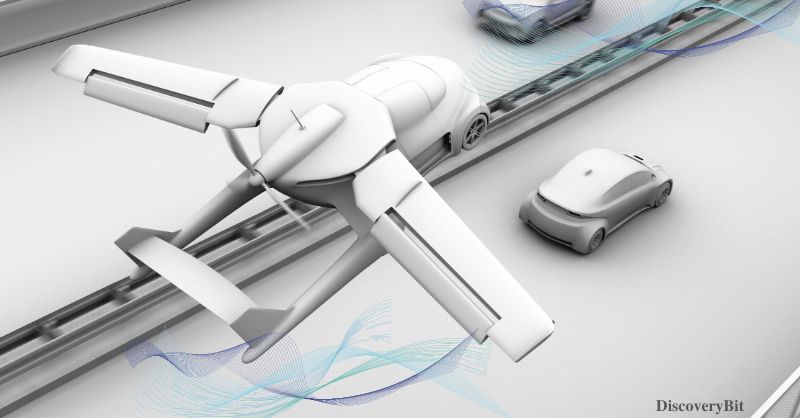31) Flying Cars

The idea of flying cars has been around for decades, but recent advancements in technology have made it a reality in the 2010s. Companies like Terrafugia, PAL-V, and AeroMobil have developed flying cars that can transition from driving on the road to flying in the air. These vehicles offer the potential for more efficient transportation and less congestion on roads. However, there are still many regulatory and safety concerns that need to be addressed before they can become a common mode of transportation.
32) Smart Fabrics

Smart fabrics, also known as e-textiles, are fabrics that incorporate electronic components such as sensors, lights, and power sources. The development of smart fabrics has enabled the creation of wearable technology that can be seamlessly integrated into clothing. The earliest work on smart fabrics dates back to the 1990s, but significant advancements have been made in the 21st century. Companies such as Nike and Google have developed products using smart fabrics, including athletic wear that monitors biometric data and interactive jackets that can control music playback. Smart fabrics can also monitor health, detect environmental hazards, and change color and shape.
33) Gene Therapy

Gene therapy, first innovated in the 2000s, is a medical treatment that involves modifying a person’s genes to treat or cure disease. This innovation has the potential to revolutionize the way we treat genetic diseases and even certain types of cancer. Companies like Spark Therapeutics and Bluebird Bio are at the forefront of gene therapy research, with notable successes in recent years.
34) Emotion Recognition

Emotion recognition technology uses facial recognition and machine learning algorithms to analyze facial expressions and identify the emotional state of an individual. This technology has a wide range of potential applications in areas such as marketing, healthcare, and security. Emotion recognition is used to understand customer preferences, help diagnose mental health conditions, and detect potential security threats. The technology, first developed in the 2010s, is constantly improving, with the ability to recognize emotions in real-time becoming more accurate. Emotion recognition has the potential to revolutionize the way we interact with machines and technology. Emotion recognition technology can analyze facial expressions, voice tone, and other factors to identify emotions in humans.
35) Vertical Farming

Vertical farming is a method of growing crops in vertically stacked layers using artificial lighting and a controlled environment. The technology has been under development since the early 2010s, but it gained widespread attention as a potential solution to food security and urban farming challenges. Vertical farming has the potential to increase crop yields, reduce water usage, and provide fresh produce to urban areas. Vertical farming technology can grow crops in a controlled environment, reducing the need for pesticides and herbicides.
36) Automated Warehouses

Automated warehouses utilize advanced technology such as robotics, artificial intelligence, and IoT to improve efficiency and productivity in warehouse operations. Innovations in software and hardware have made it possible for these warehouses to operate autonomously, with minimal human intervention. The first automated warehouse was developed in the early 2000s by Kiva Systems, which was later acquired by Amazon in 2012. The use of automated warehouses has led to faster delivery times, increased accuracy, and reduced labor costs, making them an important innovation in the world of logistics and e-commerce. Automated warehouses can reduce labor costs, increase efficiency, and improve safety.
37) Autonomous Delivery Robots

Autonomous delivery robots are self-guided robots that can travel from one point to another without human intervention. They can be used to deliver packages, groceries, and other items. Companies like Starship Technologies and Amazon have developed autonomous delivery robots for last-mile delivery. These robots can navigate sidewalks and streets, avoid obstacles, and deliver packages to customers’ doorsteps. Autonomous delivery robots are seen as a way to reduce delivery costs and improve efficiency, especially in urban areas. The first autonomous delivery robot, developed by Starship Technologies, was introduced in 2014.
38) Brain-Computer Interfaces

Brain-Computer Interfaces (BCIs) are devices that enable direct communication between the brain and a computer or other external device. BCIs can be used to control prosthetic limbs, communicate with computers, and treat neurological disorders. The technology works by detecting and interpreting neural signals in the brain, which are then translated into commands that can be used to control external devices. The first BCI was developed in 2004 by researchers at the University of Pittsburgh, who created a device that enabled a monkey to control a robotic arm using its thoughts.
39) Liquid Biopsies

Liquid biopsies are diagnostic test that detects cancer in the body through a simple blood test. The test is capable of identifying cancer cells or pieces of cancer DNA that are released into the bloodstream, allowing doctors to detect cancer at an early stage, monitor the effectiveness of treatment, and make more informed decisions about patient care. This non-invasive test eliminates the need for traditional biopsies that can be invasive, painful, and may not always provide accurate results. Liquid biopsies were first developed in the 2010s and have revolutionized cancer diagnosis and treatment.
40) Wireless Brain Sensors

Wireless brain sensors are a new type of medical device that allows doctors to monitor brain activity remotely. They use wireless technology to transmit data from the brain to a nearby computer or mobile device, allowing doctors to monitor patients in real time. The development of wireless brain sensors has been ongoing since the early 2000s, with companies like Neuropace and Medtronic leading the way in research and development. This technology is still in the early stages of development, but it has the potential to revolutionize the way doctors diagnose and treat neurological disorders such as epilepsy, Alzheimer’s disease, and Parkinson’s disease.
Tags: Best innovations Best inventions of the 21st century Disruptive innovations Emerging innovations Future innovations Futuristic technology inventions of the 21st century Greatest inventions of the 21st century Innovative products Latest innovations Most innovative technologies of the 21st century new innovations New innovations in technology new innovations of the 21st century






